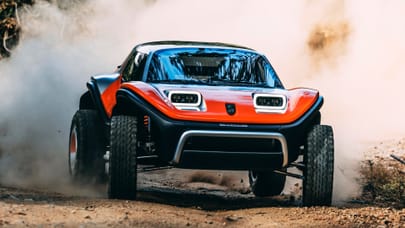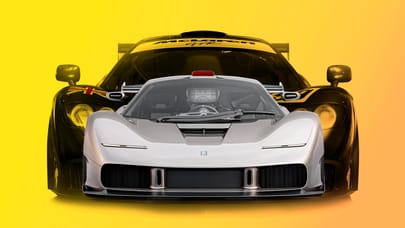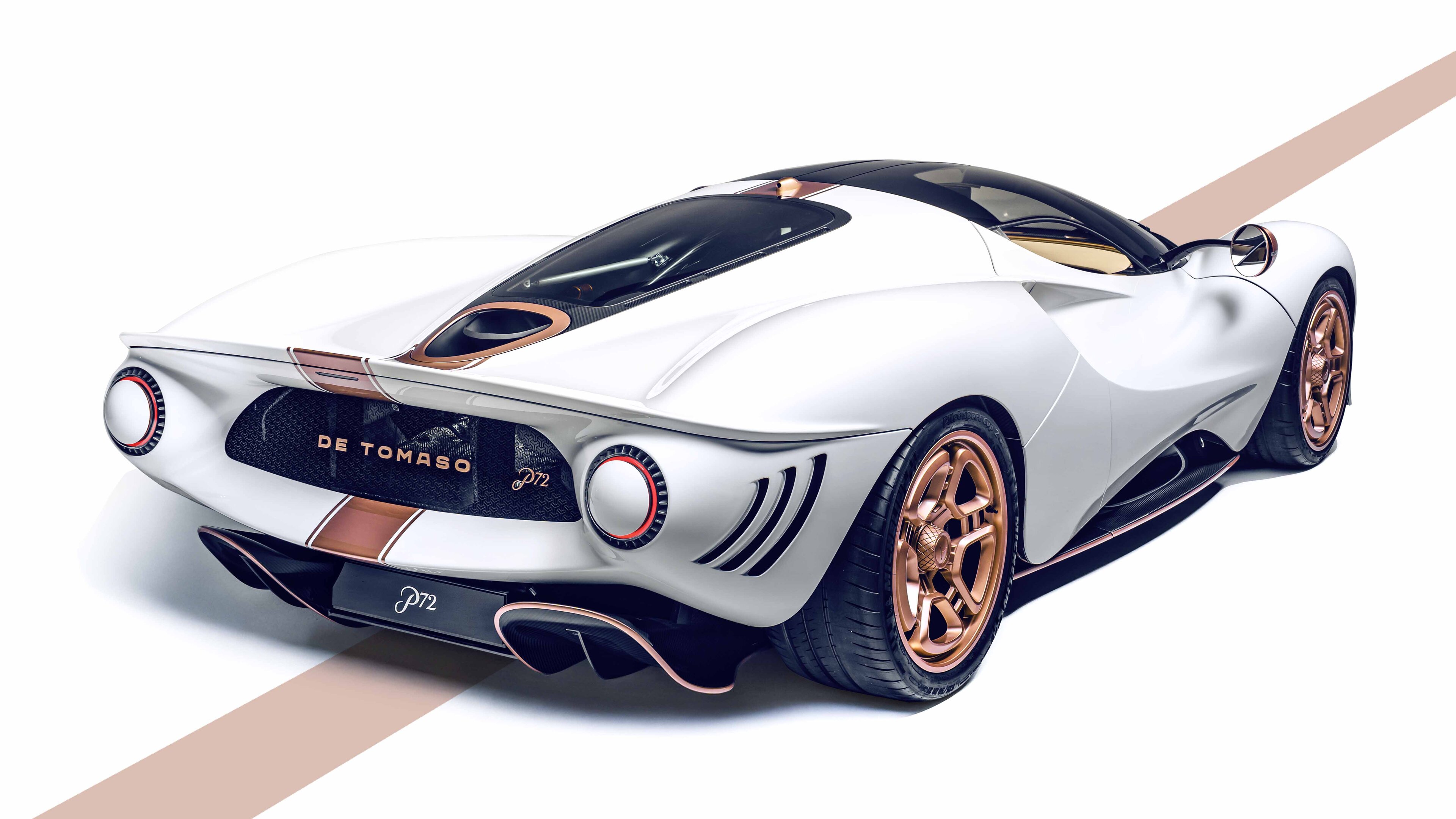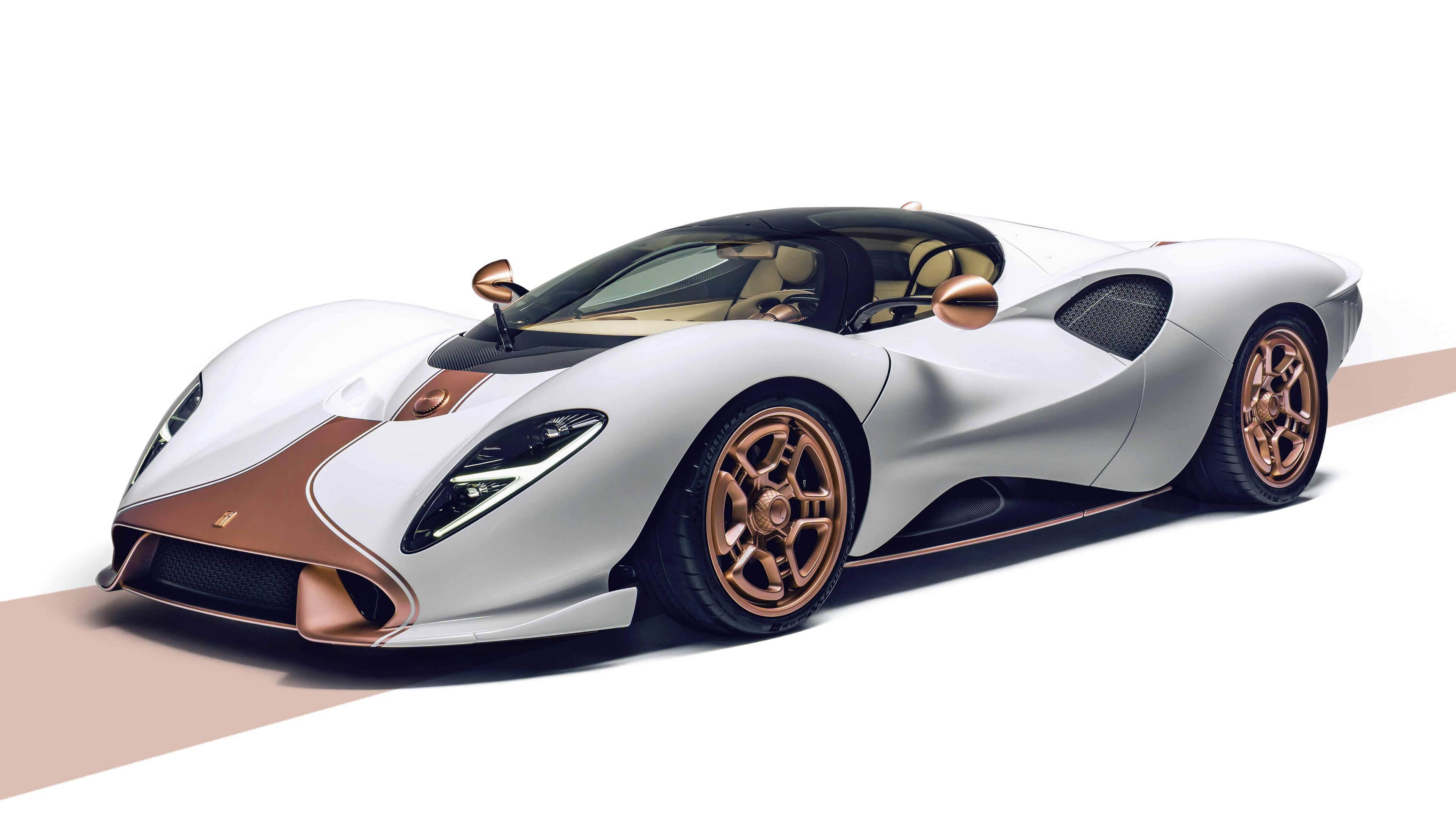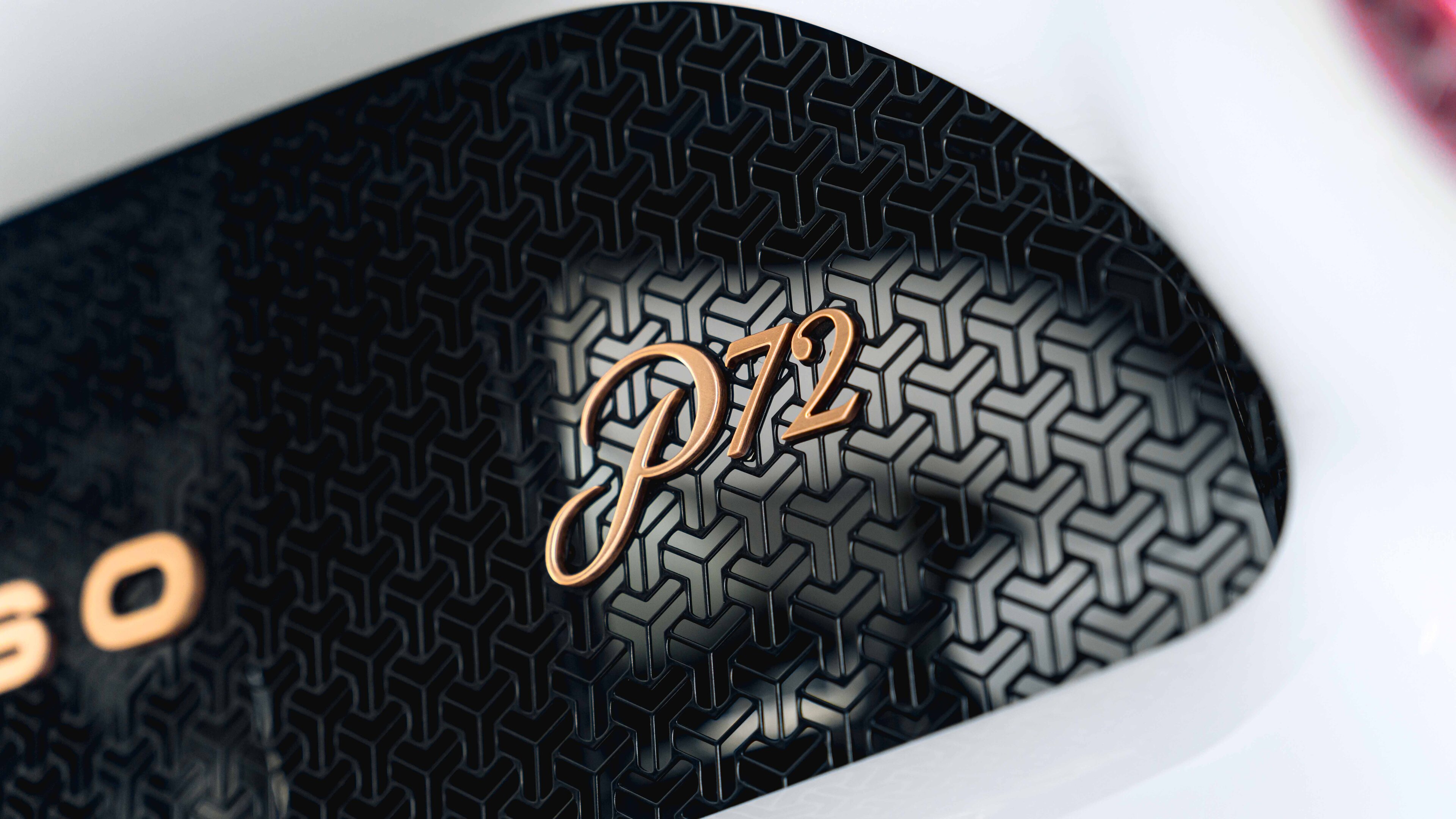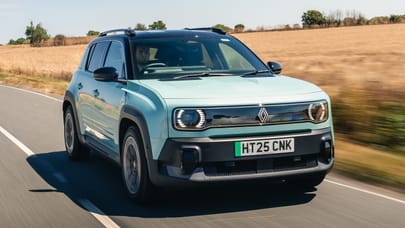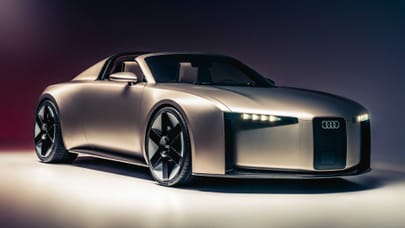
Tomaso Catchup: up close with the gorgeous P72 project
Did you presume De Tomaso's revival was more wannabe Pagani vapourware? Amazingly, it's finished. Here's the story...
In the realm of Very Fast Cars, things happen s-l-o-w-l-y. Last month, Top Gear brought you a world exclusive Lotus Evija test drive. Revealed in 2019, the world’s most powerful road car wasn’t ready for either of its customers until mid-2025. If that strikes you as running later than a Northern rail service, what about the Aston Martin Valkyrie? The V12 F1 moonshot finally starred at TG’s 2024 Speed Week eight years (and two CEOs) after it was announced. And those are the cars that scramble out of the primordial ooze of a wishful rendering into carbon clad reality. If you slapped a deposit down on an Arash AF10 (2016), Dendrobium D-1 (2017) or heaven forbid the second gen Tesla Roadster (2017) your investment’s about as safe as $hawktuah coin.
So despite a knockout reaction back in the pre-saucepan bashing times of 2019, you probably didn’t expect to hear from the De Tomaso P72 again. When the rouge beauty was unveiled at that summer’s Goodwood Festival of Speed, the company didn’t have a factory or a confirmed engine supplier. Classic vapourware.
Plus the curse of badge baggage: De Tomaso peaked in the 1970s, floundered in the 2000s and was bought out by Hong Kong financier Norman Choi in 2014. Have a canter through the leagues of defunct sports car marques that new money’s gamely failed to resurrect. Brabham. Bristol. Delage, Marcos, Veritas, TVR. Even before Covid-19 or tariffs hit, the P72’s survival chances were lower than a plucky promoted Premier League side’s.
Photography: Mark Riccioni
But knock me over with a peacock feather, it’s complete. First deliveries in time for Christmas to 72 very patient owners. Well, 71 originals – an elderly American deposit holder actually died waiting – but De Tomaso’s backers weren’t worried. Its waiting list outstrips the number it’ll build 20-fold.
I’m meeting the company boss and his labour of love in a nondescript studio on the fringes of Stuttgart. Customers are inbound for a ‘ta-dah, thanks for holding’ anticipation builder as they sift through swatches. Days after I’m allowed to sit inside (on a chamois leather so my jeans don’t discolour the virgin seats) it’s shipped stateside to meet more clients. Seeing is believing.
Let’s canter through the spec and we’ll alight on what’s changed since 2019. The carbon bodywork originally sketched by ex-McLaren talent Jowyn Wong has survived intact. Thank God for that, it’s a stunning shape that owes nothing to generating downforce. Instead it appears to be made of windswept silk then frozen with liquid nitrogen. The only visual change is a less angular diffuser, concealing twin transmission chilling radiators.
Those voluptuous haunches and bubble canopy are rich in nods to the Ferrari P3/4 and Lola T70 MkIII with just a dash of original Porsche 917K. De Tomaso only notes the one off P70 prototype racer as the real inspiration for the shape. Not so sure about that – the P70 had a fixed rear wing and faired wheels – and was destined to only race once, as project chief Carroll Shelby was poached by Ford in 1965 to mastermind something called the GT40.
Power, ironically, comes from Ford. Just like the Pantera and Mangusta of De Tomaso’s heyday, the P72 is thrust along by a big American V8: the 5.0-litre Coyote rumbler usually found in a Mustang. Humble beginnings, but that’s deliberate. Choi says he wanted to continue the company’s lineage of Detroit firepower, and create a ‘timepiece’ – an heirloom passed down through generations. Something easier to service than a hybrid boost quint turbo V17.
Top Gear
Newsletter
Thank you for subscribing to our newsletter. Look out for your regular round-up of news, reviews and offers in your inbox.
Get all the latest news, reviews and exclusives, direct to your inbox.
In truth it’s still fairly specialised for tomorrow’s ‘have a go’ mechanics. Pistons are forged, so’s the crank. Norman specified a supercharger on the proviso it emitted exceptionally quiet pulley whine so the car sounds naturally aspirated. By today’s supercar standards its 700bhp output is quaint, but it’s only got 1,400kg to shove. Norman is unbothered he’s waited six years for an inferior power to weight ratio to a McLaren 750S at six times the price. “For me it’s not just about pure speed, it’s about engagement. When you drive this car it’s moving theatre. Sometimes in life it’s nice to not be in the fast lane – to enjoy the moment.”
Which explains why the P72 continues the latest trend in boutique supercars – a manual gearbox. The prototype used a sequential shifter, but as promised the production car subs in an H-pattern six speed, its exposed linkage forming a Pagani-ish centrepiece to a truly exquisite cabin. Entry just got easier – the carbon monocoque (built to Le Mans prototype crash standards) has had a chunk shaved off the sill. The seats, previously slender quilted buckets, are now carved directly into the tub.
To get comfy, there’s ample steering wheel adjustment and the pedal box slides on sprung runners (like the Ford GT and LaFerrari). The designers insist the P72 is more of a grand tourer than its mysterious track only cousin, the Apollo Intensa Emozione, but the driving position’s pure motorsport. You’re cradled forward, backside low, heels raised, sighting the nose through mountainous front wings. It’s not a roomy cockpit, but glass door tops flood light in to ease the intimidation factor and, let’s be honest, invite anyone nearby to gawp inside.
There are 179 individual aluminium fixtures inside the P72. I only mention that because there are a mere 160 pieces in the new Bugatti Tourbillon’s cabin, which shares the same brightwork supplier. You can demand any colour you like if rose gold isn’t your thing, and there are three finishes on offer: hand brushed, hand polished or ‘blasted’ matte. The rev counter spins to IX – yes, it’s engraved with Roman numerals. Physical dials were a must. But in 2025 even that’s a challenge, due to the quantity of warning lights now mandated to live in a driver’s eyeline.
Weird, how legislation is sticking its nose in even on limited run unobtainium. The P72 is actually too low to comply with future roof height regs. And it’s corked with a pathetic 63dB exhaust noise limit. At least the silencers are expensively ceramic coated. With a wink, lead designer Jakub Jodlowski hints there will be a fruitier exhaust on offer for customers who also own their local constabulary.
Sprouting from the ceiling are knurled knobs to operate the heater and electric windows. Obviously. What you won’t find is a volume knob, a USB port, or any infotainment whatsoever. Again, the justification is timelessness. Touchscreens age like milk. Engraved jewellery doesn’t. The only concession to digital tech is the (optional) rearview mirror, actually a display for the reversing camera conceded by serial supercar owner Norman who frequently berates slit windowed exotica while manoeuvring around narrow parking garages in Hong Kong. Put those violins away.
But driving modes? No. Active aero is absent. A button for switching off the ESC suggests one allowance of modern driver aids, but designer Jakub explains the car is optimised for low drag (hence the longtail and minimal shutlines) while his team has taken handling notes from the Goodwood Revival, not the British Grand Prix. Mechanical grip, rather than the invisible cheat code of downforce, and a preference for being steered on the throttle. Really? In an airbag free mid-engined unicorn priced at £1.4m plus taxes? If you say so.
If it proves to be a timeless tonic for the ages, a piffling six year supercar gestation won’t feel like a long time
Every time an engineer earnestly explains how their supercar’s been painstakingly optimised for thrills, I visualise the hundreds of examples forlornly snoozing in fitted pyjamas buried within humidity stabilised bunkers, quietly appreciating in value, longing for their owner to strike a financial iceberg to force a quick sale to the next collector. Choi insists his 72 chosen ones have been selected because they’ll drive theirs. It’d be tragic if they didn’t. Norman is considerably greyer than when we last met and admits the delays have been punishing. Covid and his own perfectionism took their toll. There’s been uncertainty over where the car would be built. Italy, then America, now confirmed with race team HWA in AMG’s Affalterbach-yard. Not to mention legal wranglings, and the sell-off of his previous hypercar revival, Apollo.
Later this year, we’ll discover if the drive has been worth the turmoil. The new De Tomaso has been a very long time coming. But if it proves to be a timeless tonic for the ages, a piffling six year supercar gestation won’t feel like a long time at all.






